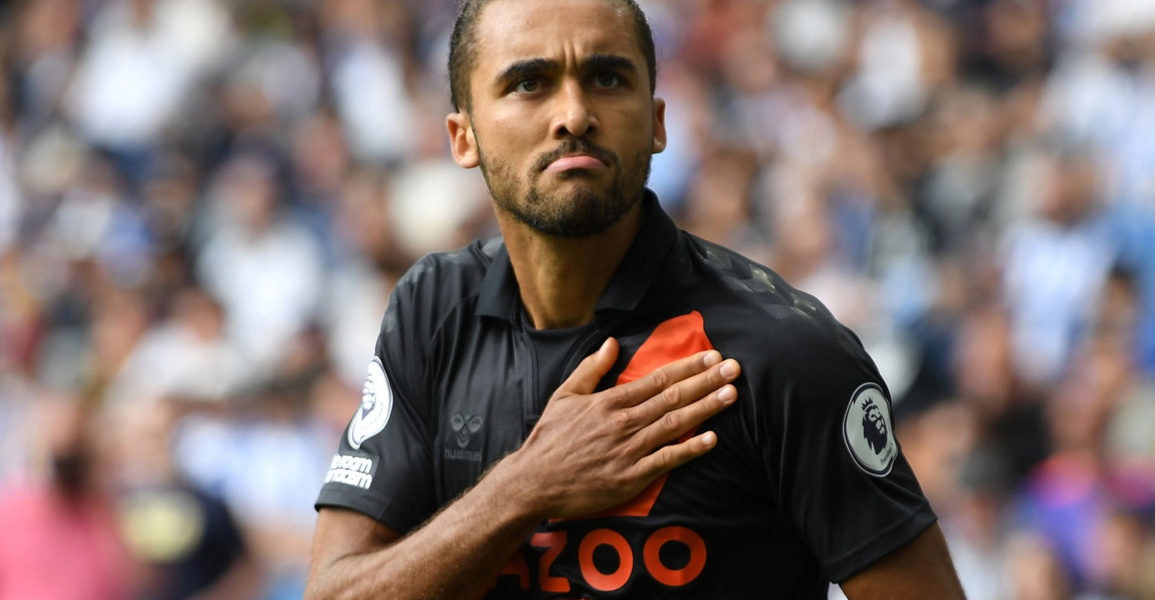I’m confident in saying that the vast majority of Evertonians would label the club’s #9, Dominic Calvert-Lewin, as the Toffees’ standout performer over the past few seasons. The 24-year old English International scored a club and career-high 16 goals in 33 Premier League appearances last season, seeing him finish 6th in the Golden Boot race. He was the youngest player in the Top 15 of that list. After scoring in each of the first three games of the fledgling 2021/22 campaign, new Everton boss Rafa Benitez revealed that Calvert-Lewin had been playing through a broken toe before suffering a quadriceps injury during the second half of Everton’s 2-0 victory over Brighton at the Amex Stadium in August. The Sheffield-born man has yet to play since that game almost 9 weeks ago, missing the following 6 Premier League fixtures, and is expected to be out for at least another 5 weeks.
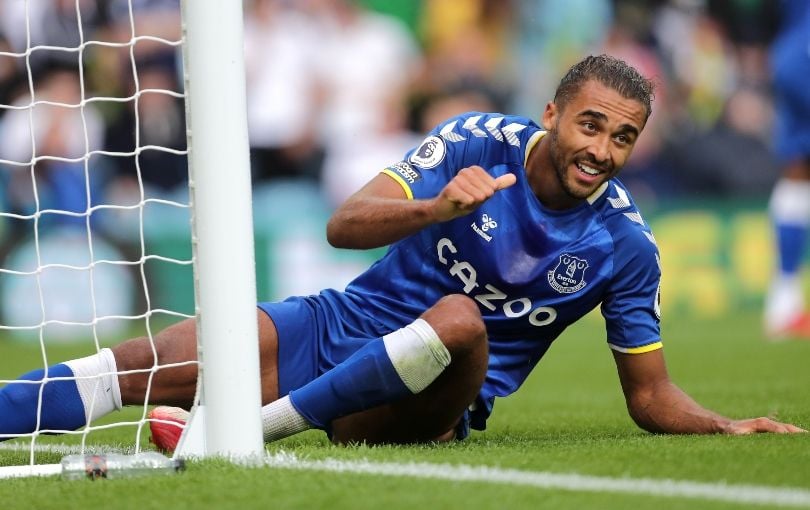
Benitez has had to turn to Salomón Rondón, who joined the club on a free transfer from Chinese outfit Dalian Professional on deadline day, to lead the line in recent weeks, but his performances have been far from impressive. The 32-year-old has failed to register a single goal contribution in 432 league minutes thus far, drawing plenty of criticism for his lack of impact on games during Calvert-Lewin’s time on the treatment table. Although it’s obvious that Liverpool’s senior club is desperately missing their talisman at the moment, I figured I would do a deep dive into the numbers to see just how big the DCL-sized hole in Everton’s current starting eleven truly is. Please note that I am only using Premier League stats in this analysis.
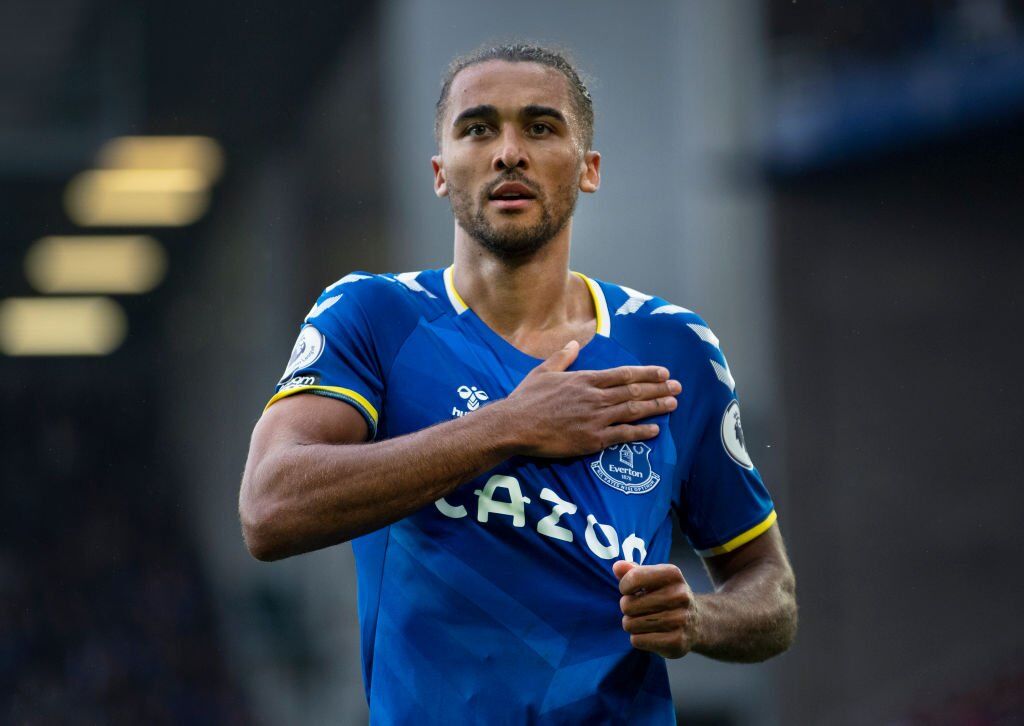
Last season, Dominic Calvert-Lewin scored 34% of Everton’s 47 goals, meaning that no team that finished above 17th place relied more on one single player for a larger percentage of their goals. For reference, the only two players above him were David McGoldrick, who scored 8 (40%) of Sheffield United’s measly 20 goals, and Chris Wood, who scored 12 (36%) of Burnley’s 33. The Toffees were especially reliant on Calvert-Lewin because of Richarlison’s poor season, as the Brazilian only scored 7 from an xG of 11.5, giving him the 4th worst “Goals minus Expected Goals” stat in the entire league with -4.5; only ahead of Jamie Vardy, Neal Maupay, and unsurprisingly in last place, Chelsea’s Timo Werner. Richarlison, who had been lethal during the 2019/20 season, scoring 13 goals from an xG of 9.1 with an over-performance rate of 42%, saw that clinical form disappear during the 2020/21 season, as he underperformed his xG by 60%, a 102% swing from the season before. That’s quite a staggering drop-off. That put even more pressure on Calvert-Lewin to find the back of the net, but he struggled to score consistently during the back half of the season due to a severe lack of service. James Rodriguez’s constant fitness struggles did not help on that front either. However, when DCL was presented with chances, his finishing was consistently solid, as he converted non-penalty xG at a higher rate than even Mohamed Salah.
Carlo Ancelotti’s appointment was undoubtedly the main catalyst for Dominic Calvert-Lewin’s almost meteoric rise as a goal scorer in England’s top flight, as shown by the fact that since the Italian was appointed, DCL has scored 27 goals in 56 Premier League games (including the 3 in 3 this season) at a rate of 0.48 goals per 90 minutes. Romelu Lukaku scored Premier Leagues goals for Everton at the exact same rate across his 4 years at the club. Pretty decent company. Everton’s second-leading scorer since Ancelotti’s arrival is the aforementioned Richarlison, who has scored just 16 in 57 appearances at a rate of 0.28 goals per 90 minutes. The absence of fans during the vast majority of the 2020/21 season certainly had a major impact on the Brazilian’s performances, as he is a player who feeds off of the energy and confidence that crowds can provide, but that’s a topic that I’ll save for another article further down the road.
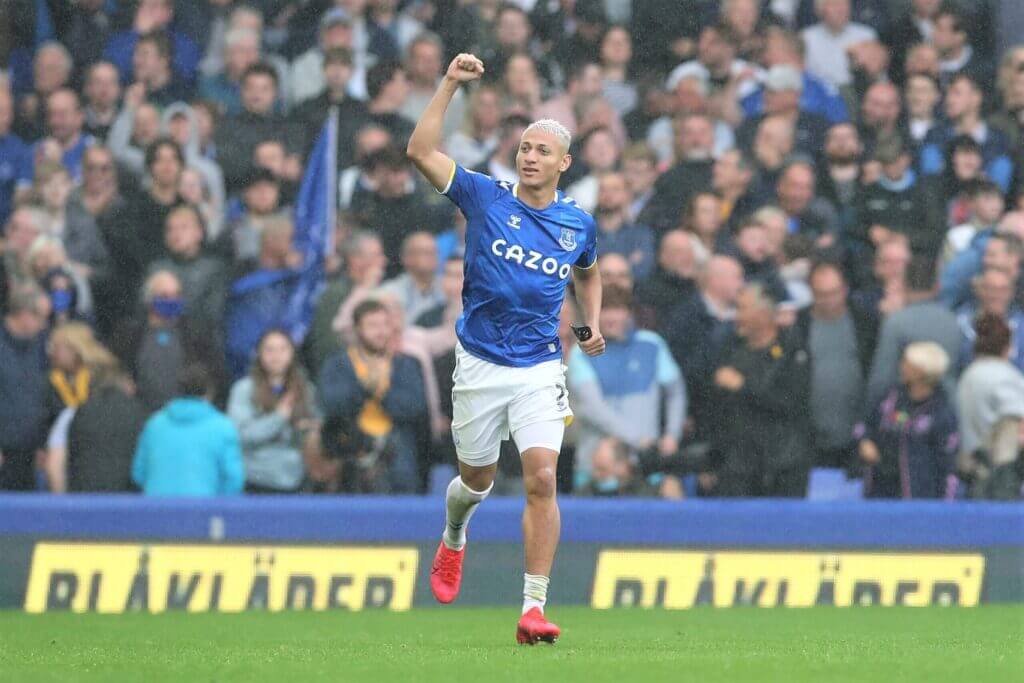
Neither Calvert-Lewin nor Richarlison, however, have been statistically the best finisher at the club in recent seasons, as James Rodriguez’s 6 goals from an xG of just 3.4 proved him to be the most clinical with an overperformance-rate of 76% last season. Surprisingly, Michael Keane has overperformed his xG by 71% since the start of the 2019/20 season, but that comes from a small sample size of chances. Calvert-Lewin’s 3 goals so far this season seem less impressive when put next to the fact that his xG is 3.8, but DCL’s impact has never stemmed from him converting more chances than the stats would suggest, but rather the fact that he is able to use his athleticism to get on the end of so many chances that Salomón Rondón, for example, cannot. That 3.8 xG is twice as much as Andros Townsend’s 1.9, which ranks second among the squad. Take into account that Townsend has played 700 minutes to Calvert-Lewin’s 248, and it’s clear just how much more potent Everton’s attack is with their #9 upfront.
Since the start of the 2020/21 season, Everton have played 11 league games without Calvert-Lewin, a sufficient sample size to display how much worse off they are without him. The Toffees have averaged 1.69 points and 1.38 goals per 90 minutes in games with DCL in that period, while those numbers have dropped significantly to 1.09 points and coincidentally 1.09 goals per 90 minutes when he has been missing. This is not a good sign considering that Benitez expects the striker to be missing for another month at the very least, and so Everton must find other ways to score goals and win points until Dominic Calvert-Lewin finally returns to the line-up.
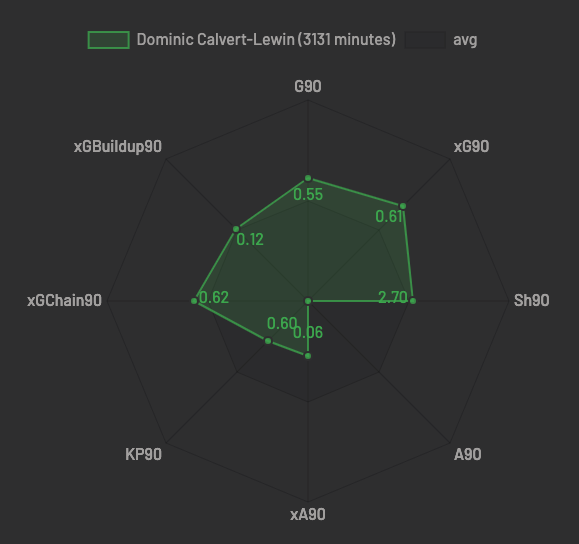
And so, in conclusion, the gap left by the absence of DCL is just as large as anyone would assume it to be. The departure of Moise Kean has left Everton short-staffed up front, and since Rondón has been so far from impressive, expect Richarlison to lead line the line for Everton until their star man eventually returns.


